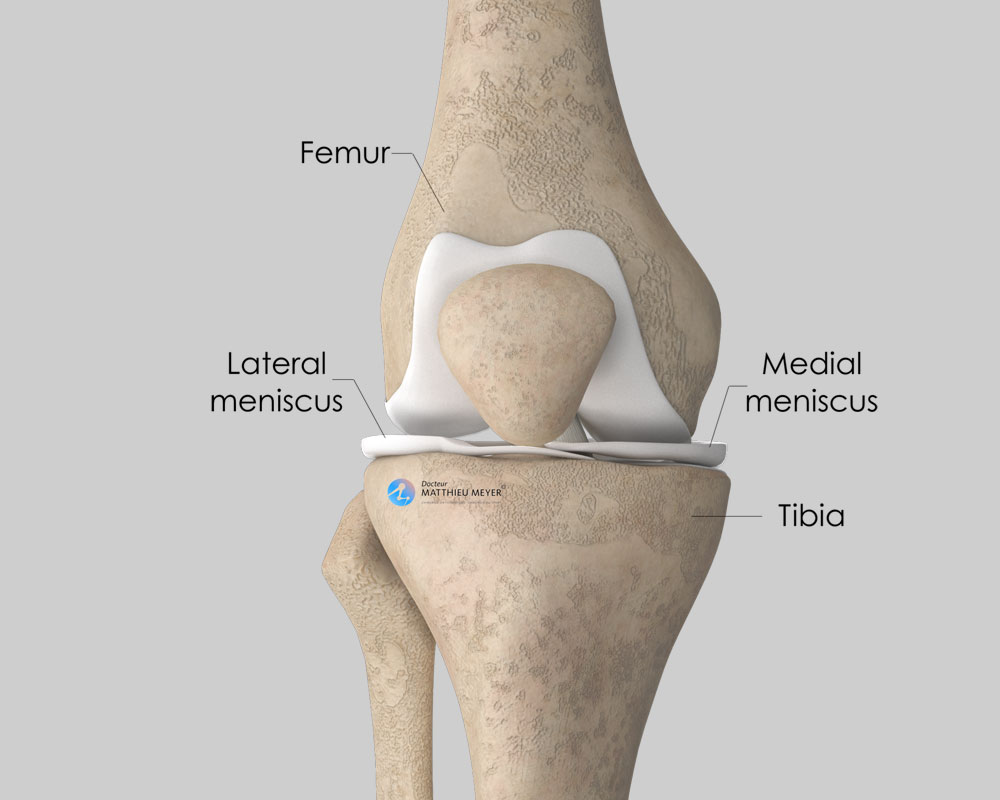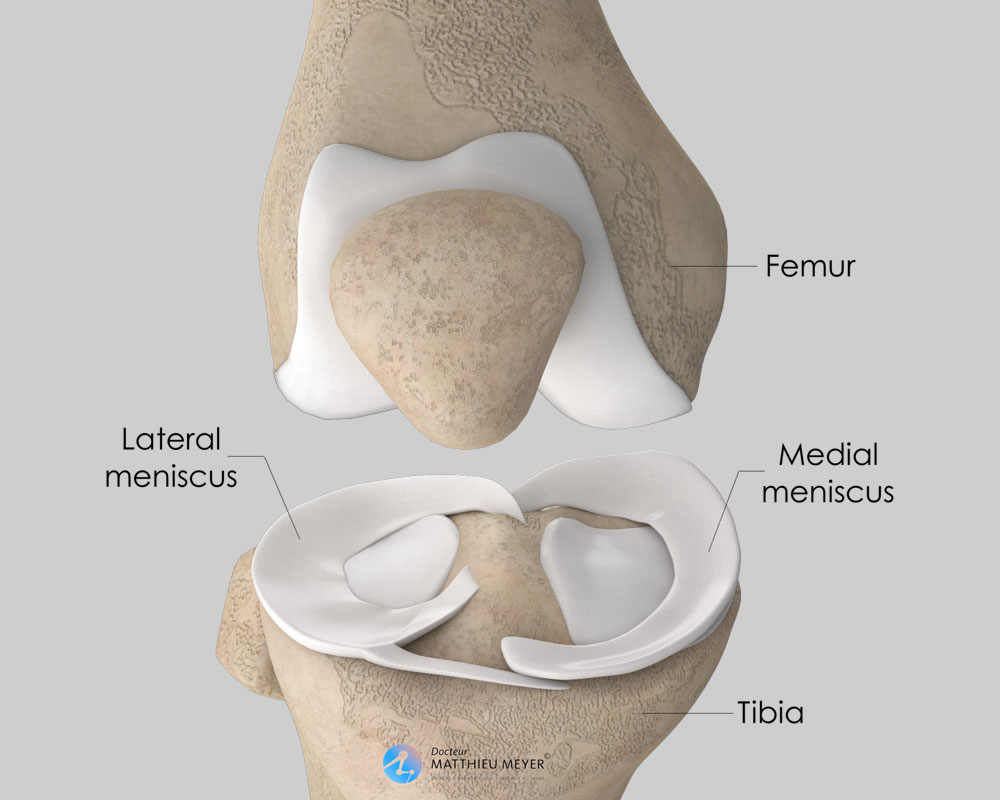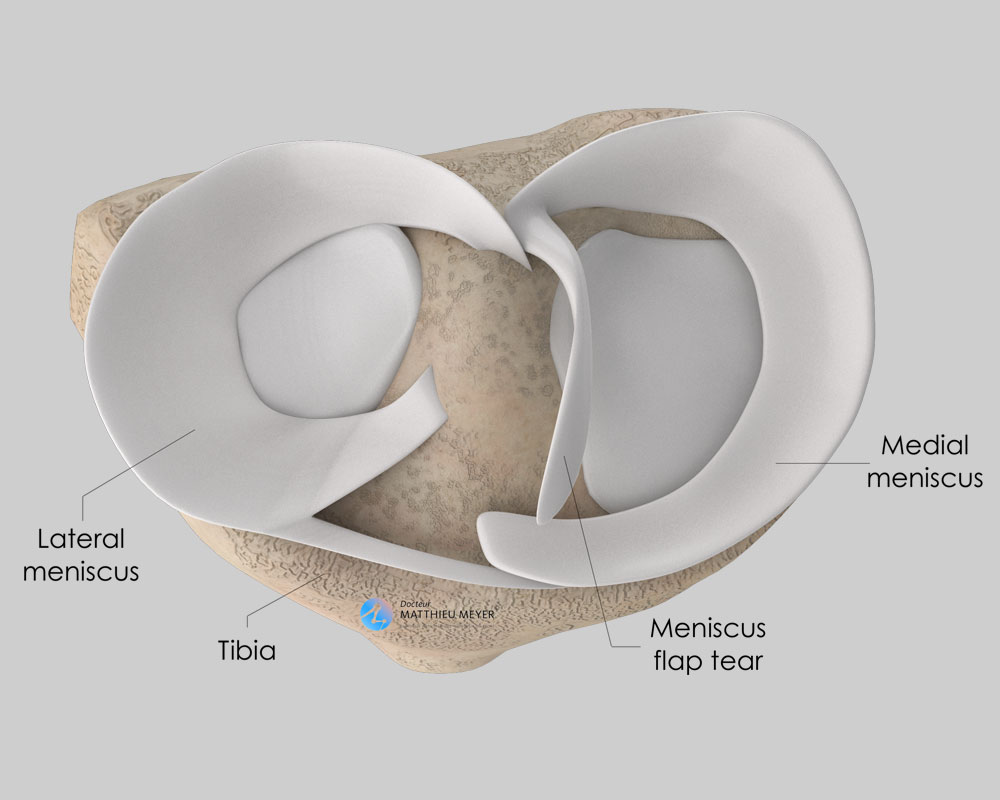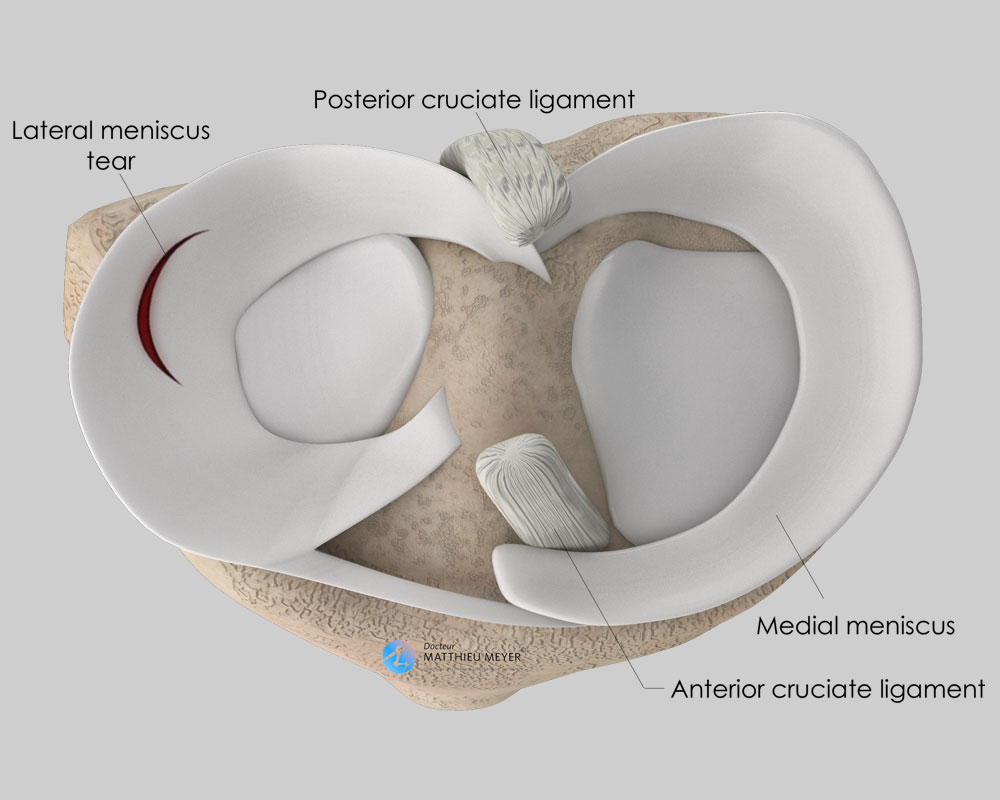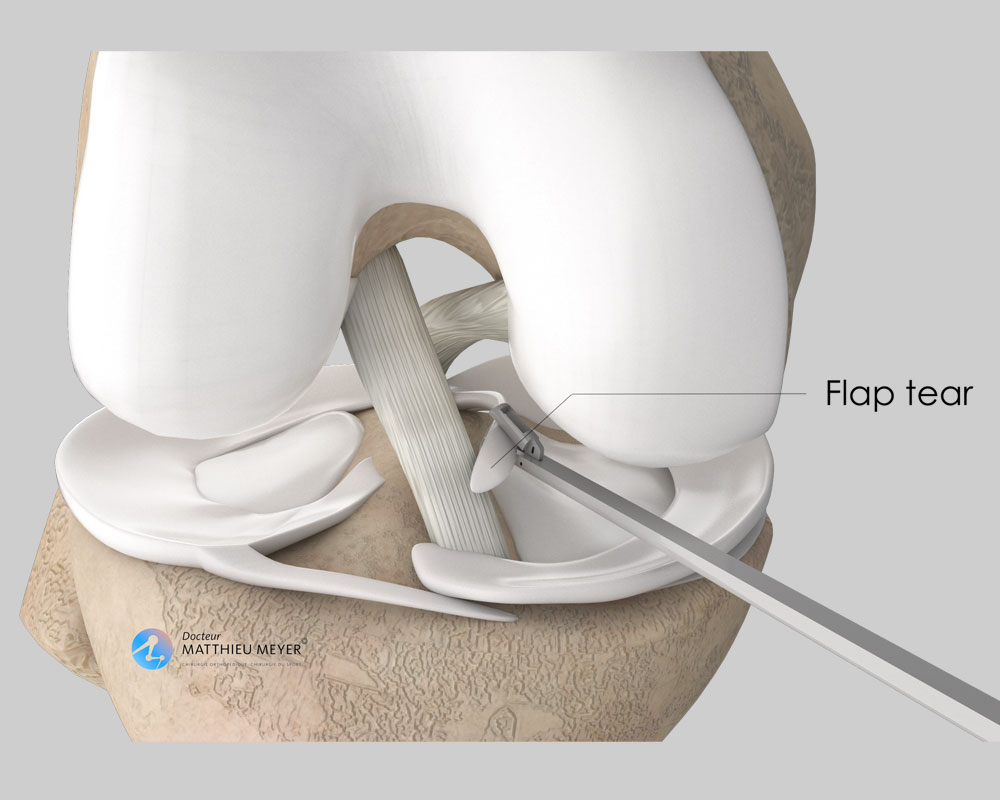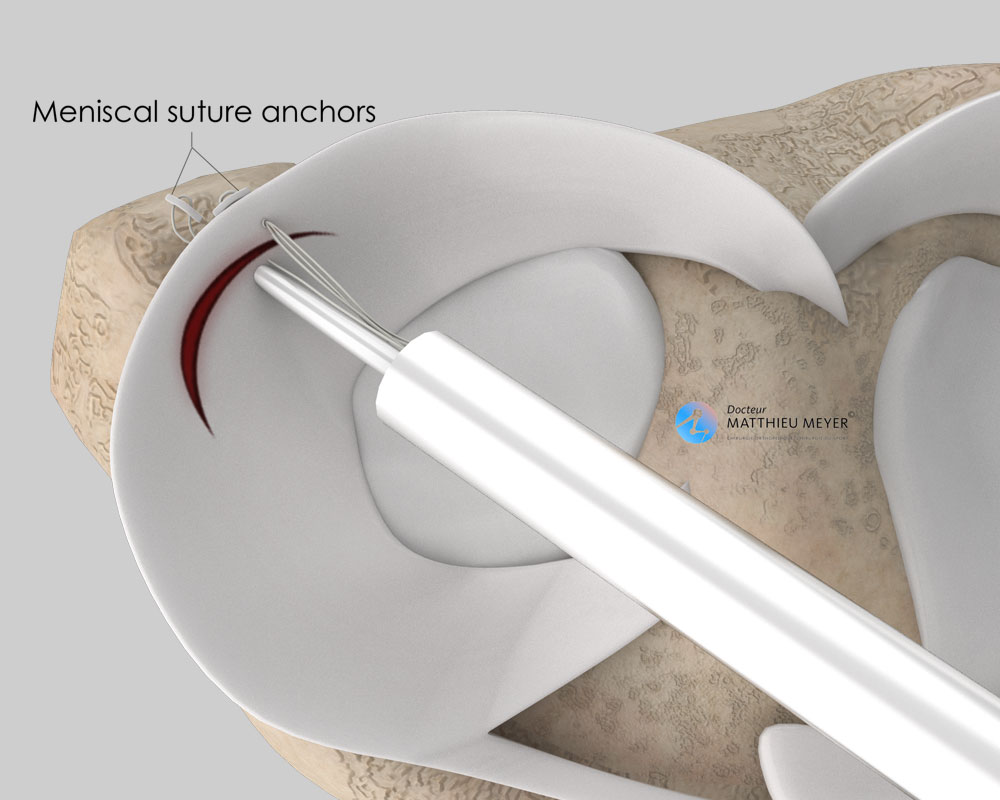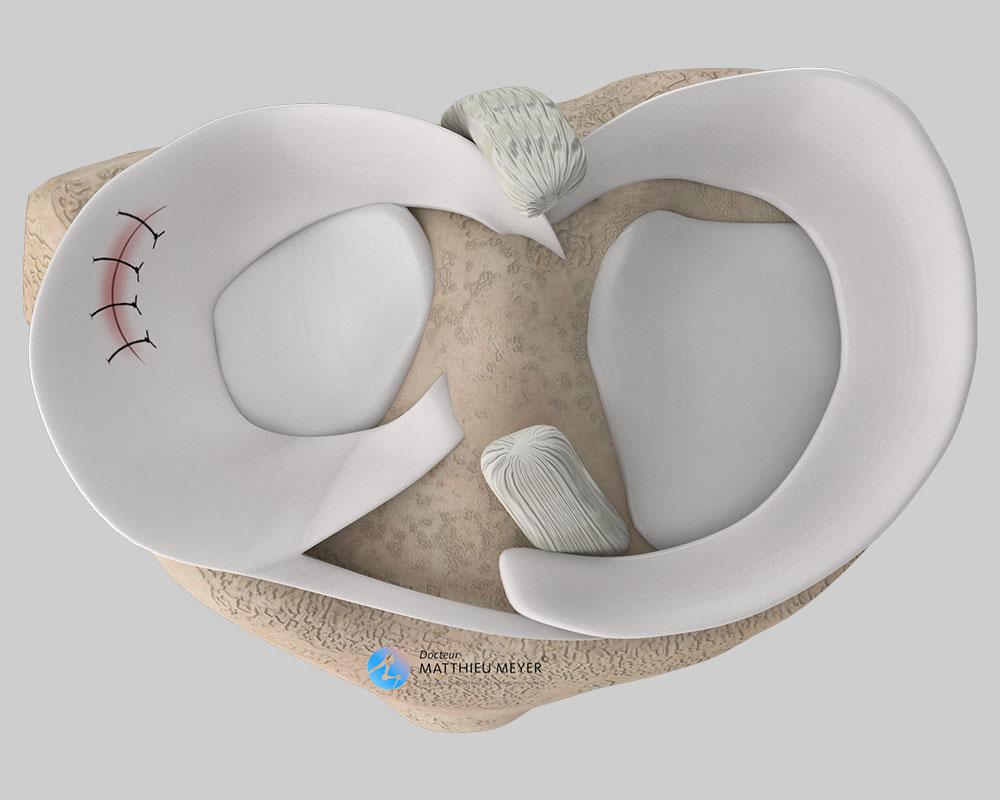This is an outpatient procedure (in one day). A pre-anaesthesia consultation is scheduled before the operation and a pre-operative assessment may be necessary to minimise the risk of complications. This operation can be carried out under general or spinal anaesthesia. The latter is a regional anaesthetic anaesthetising the lower part of the body (as with an epidural). The anaesthetist will decide on the most suitable anaesthetic together with the patient.
The operation takes place in an operating theatre in compliance with strict standards of cleanliness and safety. The patient is placed supine on an operating table and a tourniquet is placed around the top of the thigh.
The procedure lasts around thirty minutes plus the time required for the anaesthetic and preoperative preparations. In addition to the mensical surgery, the condition of the cartilage and the anterior cruciate ligament can be examined.
Immediately after the operation, the patient is taken to the recovery room to recover from the anaesthetic.
After the operation, the patient can put weight on the limb operated on. A slight limp is common in the first few days but crutches are rarely required.
Rehabilitation exercises are needed to recover knee mobility and are explained before leaving the clinic. If the patient does not feel they can do the exercises alone, rehabilitation sessions with a physiotherapist may be necessary.
In the case of meniscal repair, the knee can only be bent up to 90° for 6 weeks to avoid putting excessive strain on the sutures. Bending is not however restricted after a partial meniscectomy.
A postoperative check-up is scheduled 2 to 3 weeks after the operation to ensure good recovery, adjust rehabilitation, and identify any potential complications.
Sport can be resumed 6 weeks after the operation in the case of a meniscectomy and much later, in the 6th month, after meniscal repair.
From a practical point of view, medical leave varies according to the procedure carried out (repair or meniscectomy) as well as the nature of the patient’s profession (physical or sedentary) but generally varies from 10 days to 1 month. It is possible to start driving again in the week following the operation, as soon as the patient is capable of doing an emergency stop.


